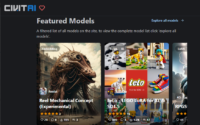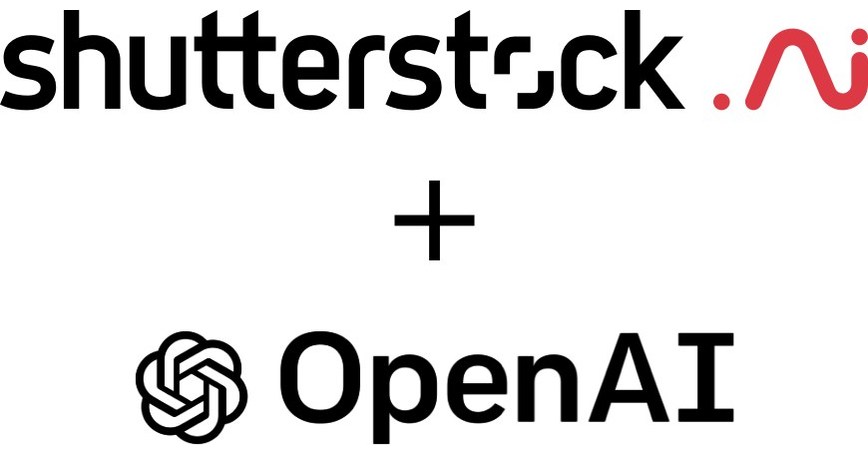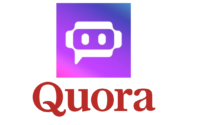Adobe Firefly Is Out of Beta-Stock Contributors Were Paid
Adobe Firefly is on fire, although the fire is contained within a dumpster. The company caught heat over the years for many things, including its move toward cloud-based software-as-a-service and its terms of service (TOS) around generative AI and data scraping.
After months of beta testing, Adobe released its Firefly generative AI model commercially yesterday (September 12, 2023), making it available across Adobe Creative Cloud, Adobe Express, and Adobe Experience Cloud. This release enables Firefly-powered features like vector recoloring in Illustrator, text-to-image effects in Express, and Generative Fill tools in Photoshop to be accessed by the general user base.
There are, however, some geographical restrictions in countries with strict AI laws, such as China. It’s something to consider when using these apps, as the restrictions are typically associated with how the company handles its data.
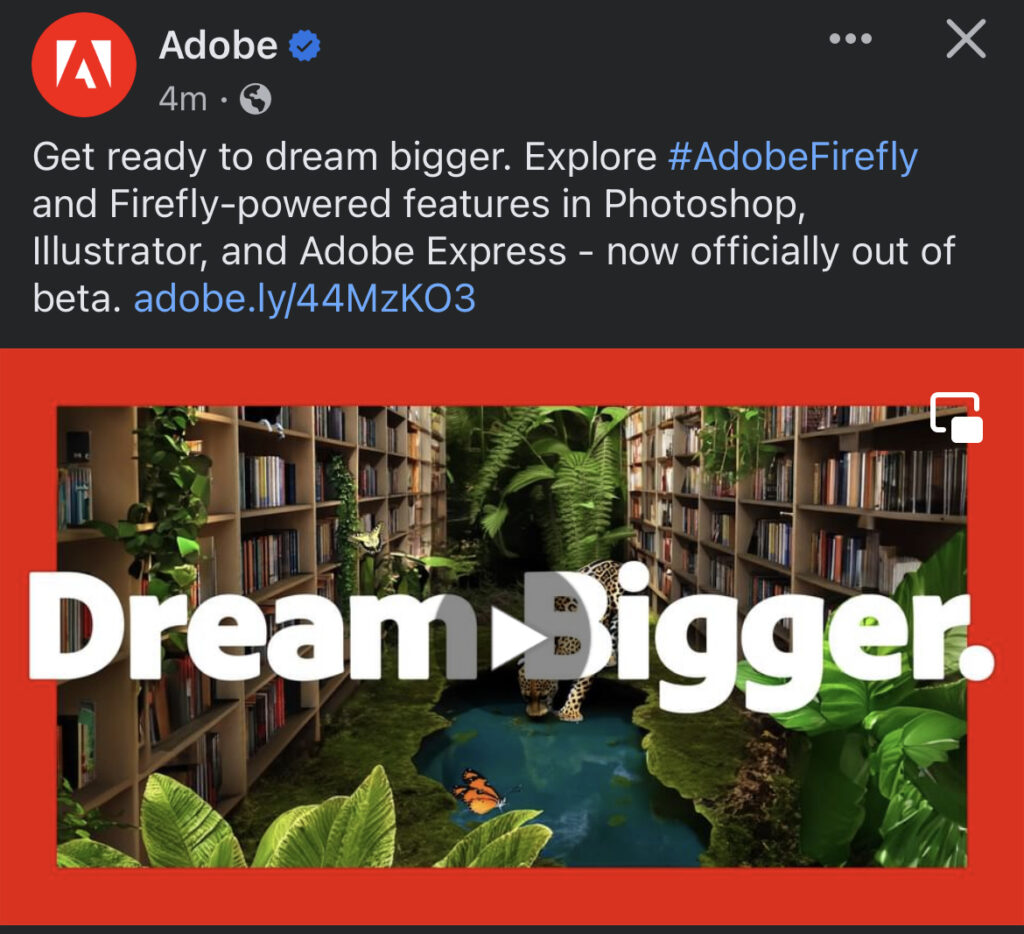
Let’s look at the Adobe Firefly situation’s good, bad, and ugly.
The Good – Compensation and Credit
Alongside these updates, Adobe is also launching a standalone Firefly web app. This will allow users to try out some of Firefly’s generative capabilities without needing a full Creative Cloud subscription. The web app and Adobe Express Premium will be bundled as part of the paid Creative Cloud plan.
For enterprises, Adobe offers Firefly for Enterprise, a version specifically designed for commercial applications. Companies can also customize Firefly with their assets to create brand-specific content, and Adobe promises to cover any legal expenses if an Enterprise customer is sued for using its generative AI app.
This is because the company claims its dataset is made in an ethical manner. Firefly (consumer or enterprise) is trained on three data sources, according to the Adobe website:
- Adobe Stock
- Public domain content and content in which copyright expired
- Publicly licensed content
Adobe claims to take responsible AI use seriously, as its Content Credentials feature claims to demonstrate. This digital “nutrition label” attaches to any content generated using Firefly. It displays metadata such as the asset’s name, creation date, tools used, and edits made. This initiative is part of Adobe’s commitment to the White House’s Safe AI pledge, aimed at identifying AI-generated content and promoting its responsible use, and Adobe’s own Content Authenticity Initiative, which hopes to put the company in control of all data.
To manage the high computational demands of generative AI, Adobe is introducing a new credit-based system. Users will be allocated a monthly quota of Generative Credits, which can be used to access faster Firefly workflows. Subscribers to Adobe’s all-app Creative Cloud plan will receive 1,000 credits per month. Users exceeding their credit limit can still use Firefly, but at a slower pace. Free plan users also receive credits, but will need to purchase additional ones if they reach their limit.
In another move to address tensions with creatives, Adobe has announced an annual bonus scheme for Adobe Stock contributors whose work was already used for training Adobe’s AI models. Although Adobe did not disclose the exact amount, it stated that the payouts would be “meaningful” and would come in addition to existing royalty payments. This could be Adobe’s way of mitigating concerns among artists who feel that their work is being used to train AI models without proper compensation…except it’s not.
Here’s the payout an Adobe Stock contributor shared with us. It covers from June 2022-2023, according to the Adobe Stock Firefly AI FAQ.

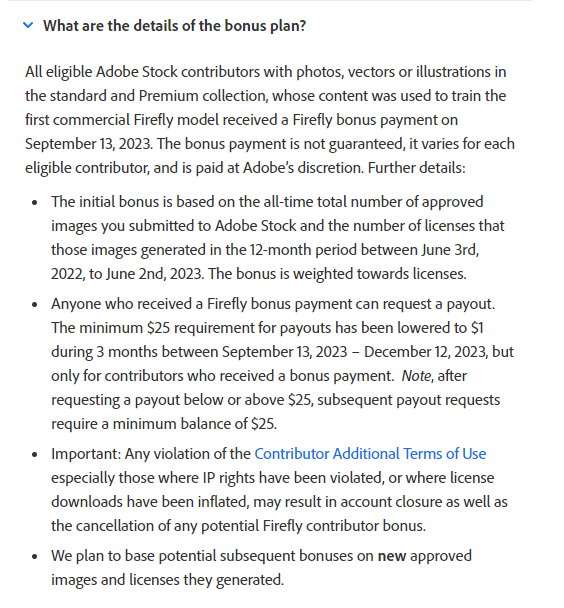
The Bad – Consent and Transparency
While a $300 payout may be nice, the account in question earned over $4000 in that same timeframe, with approximately 5000-6000 qualifying images in the dataset (it’s unclear if images marked as generative AI in the dataset are used in training) and approximately 4000 image sales. The portfolio is all MidJourney images. This makes the bonus somewhat inconsequential unless it grows and begs the question of how this number was calculated.
According to a leaked Adobe memo, just over one million contributors qualified for the payout, and only six percent of them were estimated to earn over $10 at the time. Because Adobe shows rankings, we can see that $365 (which includes the $316 alongside sales since Monday) ranks this account 4110th, in the top percentile of payments.
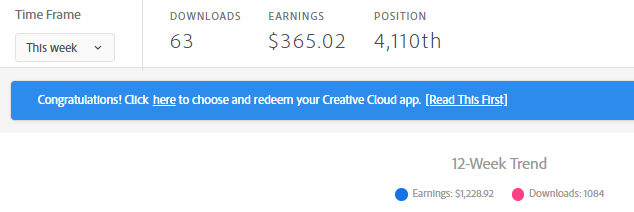
Although numbers as high as $1409 have been claimed online, there are also reports of painfully low payments to be found.

It’s a small price to be paid for training your own replacement, and many artists, designers, and photographers are rightfully upset. It’s also a one-time “bonus” as they will pay you next time based on new images approved for training.
And the above information about their AI data sources may not be as ethical as they claim. Artists on Twitter passionately dispute this and have been asking consistently since the initial beta launch and publication of the Firefly TOS what data is included in the third bucket (publicly licensed content). Many believe (although it’s yet to be proven) that Adobe trained on undisclosed sources, like its Behance social media network content.
Regardless of where it came from, it’s clear Adobe isn’t being fully transparent, and that’s just the first crack in its ethical armor. There’s also the matter of consent.
Adobe never let its contributors know in advance that they would be used in AI models. Instead, it simply announced in December 2022 that it was working on it but had already trained the models as early as June 2022 on the Adobe Stock library. So any contributors who closed their account in response over the past year and deleted their portfolio was still used in the training and will simply be opting out of compensation.
Let’s also not forget Adobe’s testimony during the July 12, 2023 Senate Judiciary Committee’s hearing on Artificial Intelligence and Copyright alongside Stability AI, Karla Ortiz, and more. It was very clear they are pushing to have their Content Authenticity Initiative encompass an artist’s style, and if they get their way, it’s only a matter of time before they abuse this power to take even further control of artists.
Karla’s are the words that hold the most weight in this hearing–creatives demand a regulatory structure that involves consent, compensation, credit, and transparency.
Without consent and transparency, Adobe is only halfway toward true ethics and morality. They have a long way to go.
The Ugly – Artist’s Relationship with Adobe
Firefly is not the first time the creative community was upset with Adobe–if anything, it’s just a constant feeling among a noticeable group within the creative community for a variety of reasons. As mentioned above, its practice of overpriced cloud-based monthly subscriptions is at the top of the list for all professionals, whether creative or not, thanks to Adobe Acrobat‘s proprietary Portable Document Format (PDF) file format.
The use of AI algorithms in their workflows and practice of training models on contributors’ collective works is just the latest in a long line of problems. A search for the term “Boycott Adobe” returns over five million results, including several blogs and petitions. It also includes this GitHub repository of Adobe alternatives.
And Adobe competitor Procreate made a big splash in the artist community last week with its special event. Not only did CEO and Co-Founder James Cuda launch a new Dreams animation app, but he also made it very clear that Procreate will not implement generative AI features into its apps and will not train on user data.
This was a direct dig at Adobe, which continues to receive heat from the artist community as they flee for human-safe alternatives. Adobe is a large enterprise, however, with a $250 billion market cap, and it’s unlikely that creatives can do anything to fully stop them.
However, we can limit their growth potential by pledging to change our habits and learning to use the best human-friendly alternatives to Adobe software that we can find.
Adobe Firefly AI is the latest step from a corporate giant that has historically not been friendly to the needs of the communities it serves. But as long as its software is deeply embedded into our lives, it will forever retain some level of power.

